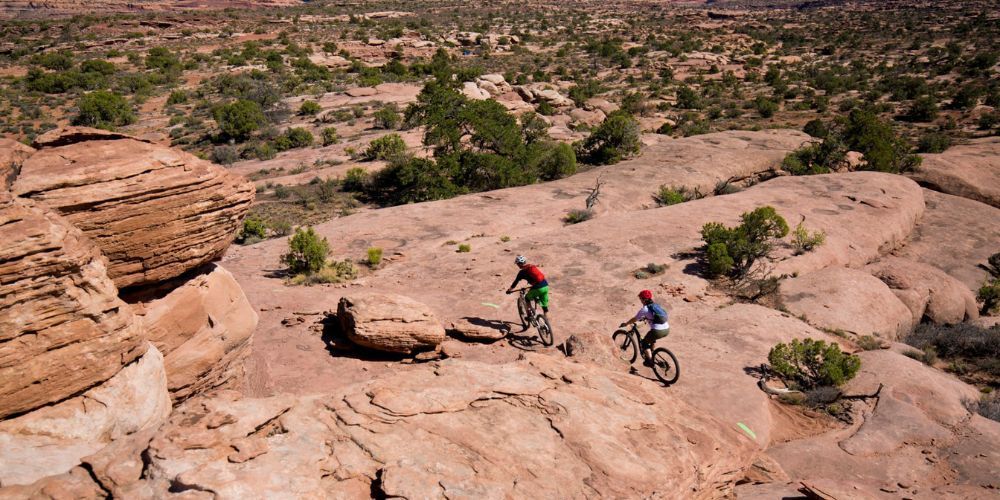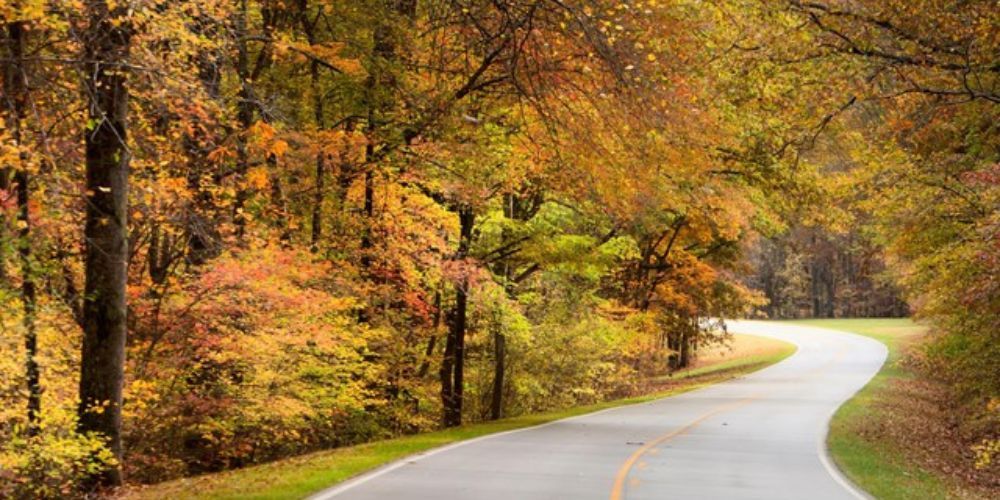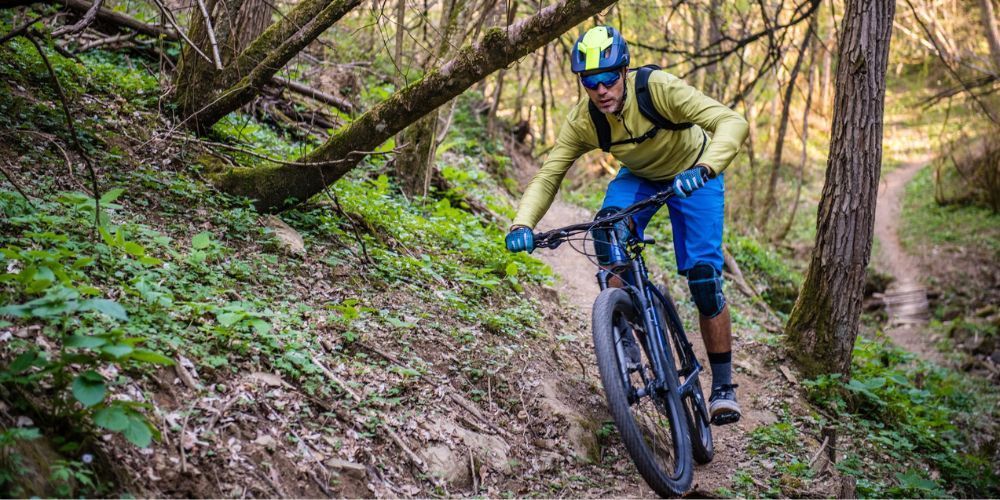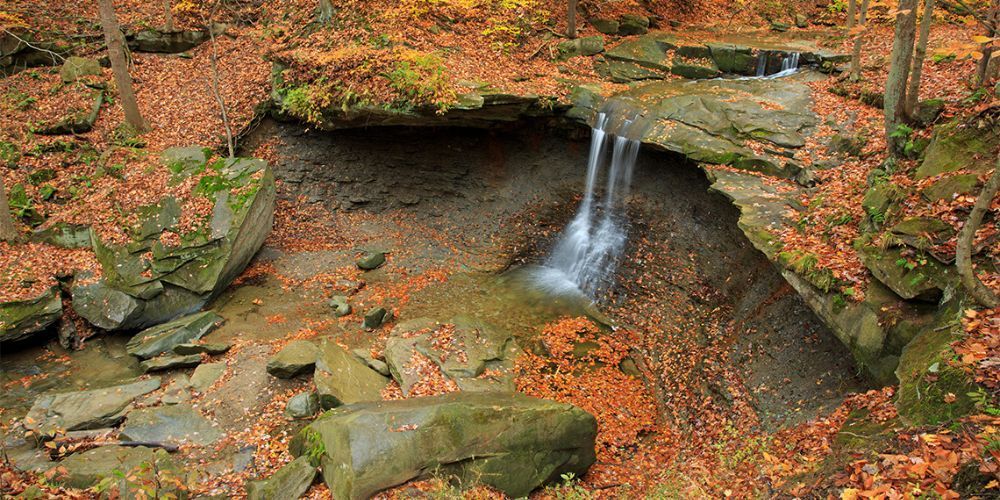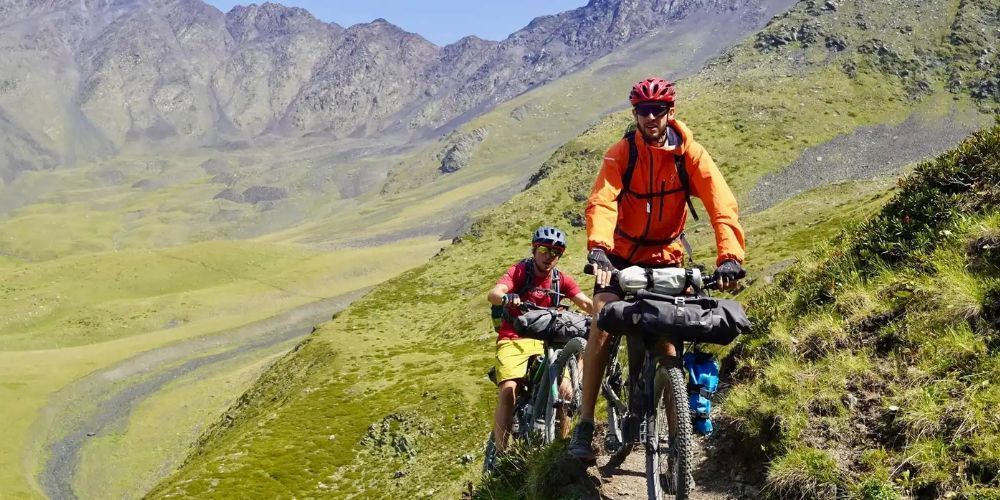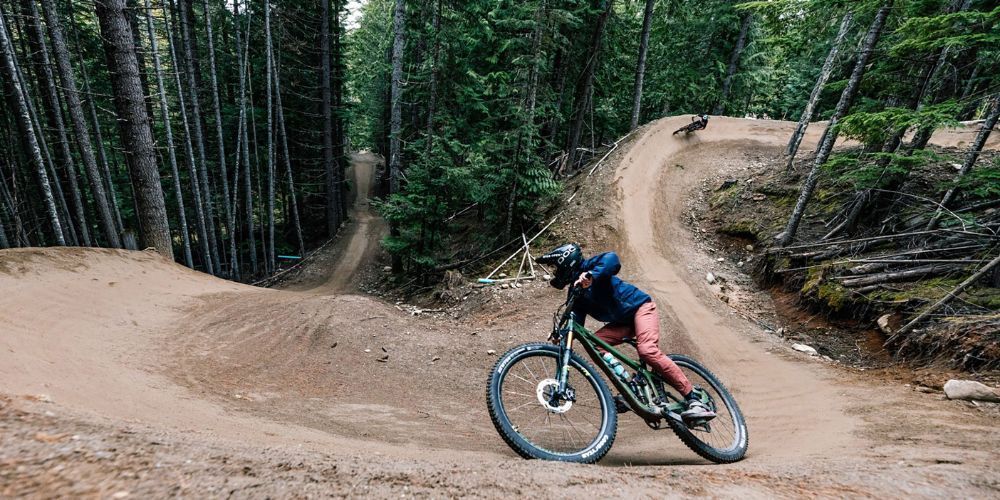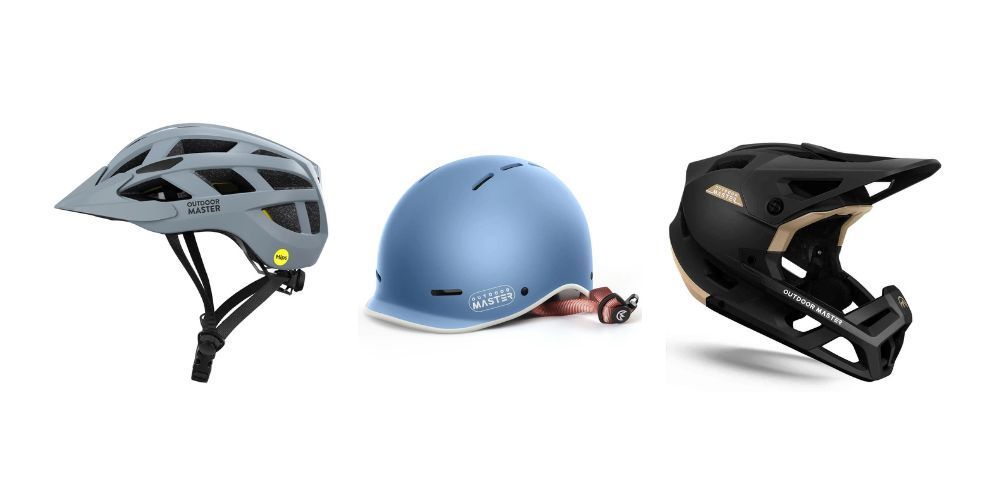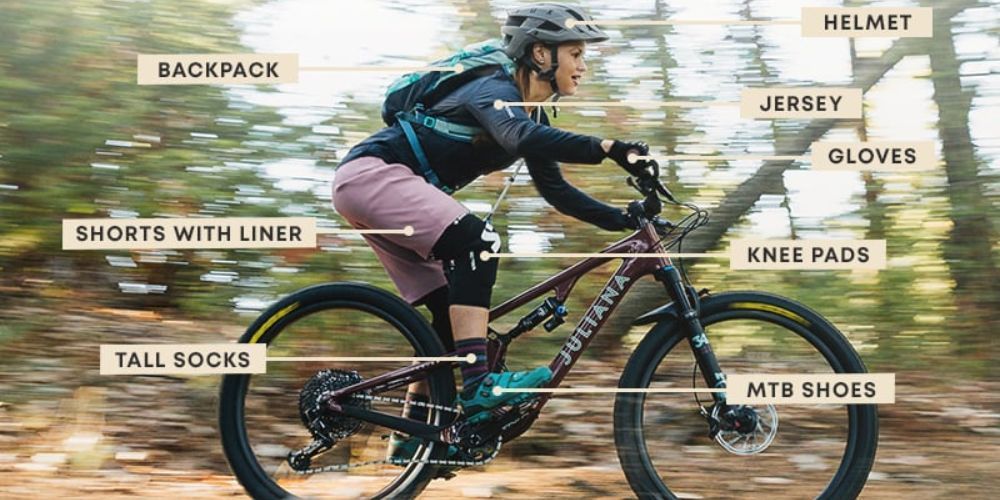William Flaiz is a lifelong athlete and outdoor enthusiast with a deep passion for adventure and sports. With over two decades of experience competing in marathons, triathlons, adventure races, and a wide range of recreational activities, William brings a wealth of knowledge to Sports and Nature Gear. Having explored 49 U.S. states and over 25 national parks, his extensive travels and hands-on experience with gear and gadgets provide readers with practical, expert advice for their own outdoor adventures. Whether it’s running, biking, kayaking, or hiking, William’s insights are invaluable to anyone looking to enhance their experience in the great outdoors. Read his full bio.
The Best Mountain Biking Hydration Packs: Stay Hydrated on the Trails
Choosing the right hydration pack can make or break your mountain biking experience. Picture yourself gliding down a rugged trail, feeling completely in sync with your bike and surroundings—then suddenly having to stop to reach for water because your pack doesn’t offer easy access or starts leaking mid-ride. This common frustration underscores why selecting a top-notch hydration pack specifically designed for mountain biking is crucial. Having one ensures you remain hydrated without breaking your riding rhythm.
We've painstakingly gathered information on the leading hydration packs that balance comfort, capacity, and durability for these very reasons. Imagine having quick access to water through magnetic bite valves or enjoying enhanced stability from well-designed hip belts—all details that truly matter when out on long trails. Based on expert reviews and practical user experiences, the ensuing selection dives into the top hydration packs mountain biking enthusiasts swear by.
The Osprey Raptor is a highly recommended choice for mountain biking hydration packs. Its wide and stable hip belt, tool roll organizer, magnetic hydration hose clip, and helmet clip make it a top choice for cyclists looking for convenience and functionality.
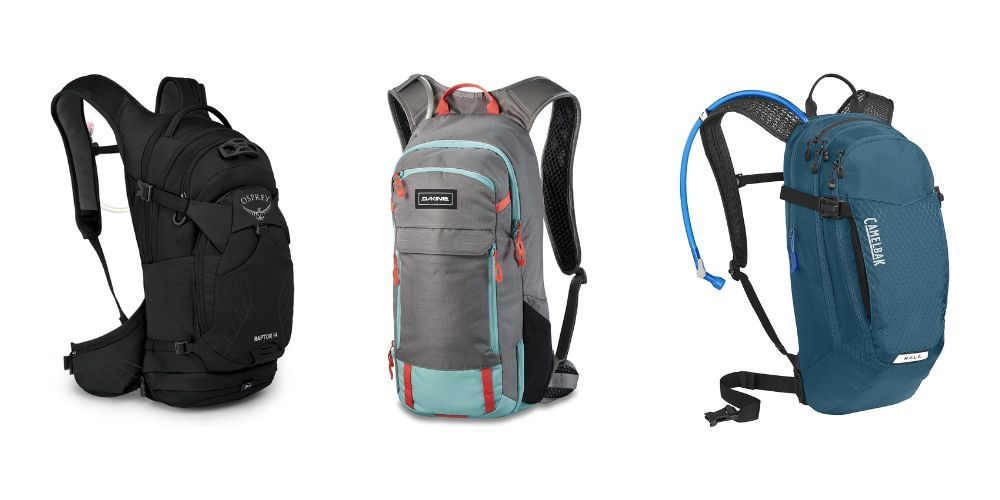
Top 5 Mountain Biking Hydration Packs
When you're out on the trails, you need a hydration pack that not only keeps you hydrated but also offers convenience and comfort. Let's explore some of the best options out there:
1. Osprey Raptor 14
The Osprey Raptor 14 is a popular choice among riders due to its 2.5L reservoir, ensuring you have enough water for longer rides. It boasts a wide and stable hip belt, keeping it securely in place even during bumpy rides. The magnetic bite valve allows for quick and easy access to water without needing to fumble around with zippers or closures. Another standout feature is its organization elements, including a removable roll-up tool pouch, making it easier to access your tools when needed the most.
2. CamelBak MULE
A classic in the mountain biking community, the CamelBak MULE features a 3L Crux reservoir, providing ample water for extended rides. Its multiple compartments are designed to accommodate tools and gear, keeping them neatly organized for quick access when required. Furthermore, the Air Director back panel enhances airflow and ventilation, ensuring that you stay cool and comfortable during your ride.
3. Dakine Syncline 16L
Designed for longer rides, the Dakine Syncline 16L comes with a 3L Hydrapak reservoir, offering generous hydration capacity. Its breathable back panel helps minimize sweat buildup and discomfort during extended use. Additionally, this hydration pack provides ample storage space, making it ideal for carrying extra gear or supplies for longer excursions into the trails.
4. EVOC Stage 12L
The EVOC Stage 12L is recognized for its ventilated back panel, promoting airflow and reducing heat buildup on your back. Its 3L reservoir capacity ensures that you have sufficient water for your ride. Equipped with a handy tool compartment and an integrated rain cover, this pack is designed to keep your essentials organized and protected from the elements.
5. Deuter Race X
For shorter, more intense rides, the Deuter Race X stands out with its lightweight design combined with strategically placed mesh padding for enhanced comfort. Its 2L Streamer reservoir provides adequate hydration without adding unnecessary weight or bulk. This streamlined hydration pack is perfect for riders who prefer agility and minimalism during their outdoor adventures.
Each of these hydration packs offers distinct advantages tailored to different types of riding experiences, ensuring that you can find the perfect balance of hydration capacity, storage options, and comfort features to match your specific needs on the trails. Whether it's a short and intense sprint or a long and challenging excursion, having the right hydration pack can make all the difference in enhancing your overall biking experience.
Types of Hydration Packs
When it comes to choosing a hydration pack, it's crucial to determine which style best suits your trail-riding needs. The options are varied and versatile, each designed with specific features to cater to different preferences and riding styles.
Backpacks
Backpack-style hydration packs are known for their larger capacity ranging from 10 to 20 liters, making them ideal companions for longer day trips on the trails. These packs come equipped with integrated reservoirs that can hold anywhere from 2 to 3 liters of water, ensuring you stay hydrated throughout your adventure without stopping too often. The extra capacity in these backpack-style packs allows ample space for storing additional gear, snacks, and other biking essentials.
Waist Packs
For shorter or medium-length rides where portability is key, waist packs make an excellent choice. These packs are smaller and more minimalist than backpacks, typically featuring reservoirs with a capacity of 1 to 1.5 liters. The compact design allows for ease of movement and quick access to hydration without the bulkiness of a larger backpack. This makes them perfect for riders looking to minimize weight while still maintaining convenient access to water during their journey.
Vests
Designed for high-performance cyclists, vests are a favorite among those seeking lightweight and snug-fitting options. These vests offer quick and easy access to hydration while minimizing bulk and weight, allowing riders to maintain maximum mobility and agility. In addition to the integrated hydration reservoirs, vests often include small pockets strategically placed for easy access to biking essentials such as nutrition, keys, or a phone. This convenient storage option ensures that riders have all their necessary items close at hand during intense rides without the need for additional gear or accessories.
Each type of hydration pack offers distinct advantages tailored to specific trail-riding scenarios and personal preferences. Consider your typical biking adventures and personal requirements when making your selection. With the right hydration pack at your side, you can ensure that staying hydrated on the trails doesn't impede your performance or enjoyment of the ride.
As you contemplate the various aspects of choosing the perfect mountain biking hydration pack, let's now dive into the key features that should demand your attention in this essential gear.
Key Features to Consider
When it comes to selecting the perfect hydration pack for your mountain biking adventures, a few key features can make all the difference.
Reservoir Capacity
The reservoir capacity of a hydration pack is a critical factor to consider. It’s directly related to the length of your rides and how much water you’ll need to carry along. For most mountain biking activities, a reservoir capacity of 2 to 3 liters is standard and should suffice for a good chunk of the day's trails.
Keep in mind that longer rides, especially in hot weather or at higher altitudes, may require larger reservoir capacities to ensure you stay properly hydrated throughout your journey. On the other hand, if you're planning short, quick rides, a smaller reservoir may be more comfortable.
Ventilation
Proper ventilation in a hydration pack is key to ensuring comfort during long rides. Look for hydration packs with well-designed back panels featuring ventilated mesh or channels. These elements help prevent overheating and improve airflow, keeping you cool and comfortable even during intense rides.
Especially during warm weather or high-intensity rides, ventilation can make a significant difference in your comfort level and overall performance on the trails.
Fit and Adjustability
A snug and comfortable fit is essential when it comes to your hydration pack. Look for packs with adjustable straps and ergonomic designs tailored to fit the contours of your body. This ensures that the pack stays in place as you ride without causing discomfort or chafing, allowing you to focus on the trail ahead.
Imagine riding through rough terrain with a hydration pack that shifts and bounces around; not only does it hinder your overall riding experience, but it can also lead to distractions and potential safety hazards.
Bite Valve and Hose
The ease of drinking while on the move is crucial during intense mountain biking sessions. Look for hydration packs with bite valves and hoses that are easy to use and maintain. Magnetic clips for securing the hose, along with easy-to-clean bite valves reduce the hassle of drinking on the go and minimize the risk of leaks, ensuring uninterrupted hydration throughout your ride.
It's important to consider these key features carefully as they can significantly enhance your overall mountain biking experience by keeping you well-hydrated, comfortable, and focused on conquering those challenging trails.
Now equipped with a keen understanding of what makes a great mountain biking hydration pack , let's jump headfirst into a comparison between two essential hydration system types—Reservoir vs Bottle Systems.
Reservoir vs Bottle Systems
When it comes to mountain biking, staying hydrated is paramount. But what's the best way to carry your water or sports drinks? Two popular options are reservoir systems and bottle systems. Each has its own advantages and drawbacks that cater to different preferences and biking needs.
Reservoir Systems
Reservoir systems are designed for hands-free hydration through a tube and bite valve, allowing you to sip water without needing to stop and take a drink. Imagine smoothly cruising down the trail, taking steady sips while keeping your hands securely on the handlebars — it's a game-changer for many riders. This feature makes it easier to stay focused on the trail without interrupting your flow.
However, there are some trade-offs to consider when using reservoir systems. Cleaning can be a bit more cumbersome due to the additional tubing and bite valve components. Ensuring thorough cleaning is crucial to prevent mold and bacteria growth, which can impact your health. Additionally, the weight distribution of a full reservoir can affect your balance, especially when riding technical trails or descents. It's important to maintain a stable center of gravity for safe maneuvering.
Bottle Systems
Bottle systems, on the other hand, offer a simpler approach. They are typically easier to clean and maintain compared to reservoir systems. With clear, accessible openings, it's more straightforward to ensure a thorough cleaning process, minimizing the risk of mold or bacterial buildup.
The simplicity of bottle systems also extends to their lightweight design. Carrying water in separate bottles can reduce the overall weight on your back or waist, contributing to a more comfortable riding experience—especially during extended outings.
However, this convenience comes with a potential downside: You'll likely need to stop or slow down to drink from a bottle, which can be less convenient during intense rides or technical sections where uninterrupted focus and control are crucial.
Ultimately, both reservoir and bottle systems have their own set of benefits and considerations. It's important to weigh these factors against your riding style, personal preferences, and the specific demands of your biking adventures before making a decision.
As we navigate through the intricate details of hydration pack features, let's now turn our attention to understanding the impact of comfort and weight factors for an optimal mountain biking experience.
Comfort and Weight Factors
When you're out on the trails, enjoying the rush of downhill riding or conquering challenging uphill climbs, the last thing you want is your hydration pack weighing you down or causing discomfort. Your comfort is crucial, especially during extended rides in varying terrain. Let's break down some essential elements to consider when selecting a hydration pack that prioritizes comfort and minimizes weight.
Lightweight Design
A key consideration when choosing a mountain biking hydration pack is its weight. Opt for packs crafted from lightweight materials such as nylon or polyester. These materials are durable yet featherlight, creating minimal strain on your back and shoulders during those long, arduous rides. The lighter the pack, the less fatigue and discomfort you'll experience, allowing you to focus solely on the thrill and challenge of the trail.
Lightness is paramount, especially as you navigate challenging trails where every ounce counts. Imagine cycling through steep ascents or negotiating technical descents with a bulky, heavy pack straining against your back – it's not just uncomfortable; it can throw off your balance and affect your performance. A lightweight pack ensures that your focus remains squarely on your ride, enhancing your overall mountain biking experience.
Padding and Support
A hydration pack equipped with ample padding is a game-changer when it comes to comfort and support. Look for packs that feature breathable, cushioned padding at contact points such as the shoulders and lower back. This helps to alleviate pressure points caused by prolonged wear, ensuring that bumpy trails and rough terrain don't result in discomfort or chafing.
The padding also adds an extra layer of protection against impact if you take a tumble on the trails. It's like having a personal cushion shielding your back from knocks and impacts, bolstering your confidence to tackle more challenging routes without worrying about potential discomfort.
Adjustable Straps
Imagine having a hydration pack that feels custom-made for you, offering a snug fit tailored to your body's unique contours. This customized fit isn't just a luxury; it's essential for stability and comfort during demanding rides. Hydration packs with adjustable shoulder, sternum, and waist straps enable you to personalize the fit according to your preferences.
The beauty of adjustable straps lies in their ability to distribute the pack's weight evenly across your body, reducing strain and promoting stability on unpredictable terrain. Whether you encounter steep inclines or sharp descents, having a secure, well-fitted pack ensures that it stays in place, preventing annoying shifts or jostles as you navigate obstacles along the trail.
Additionally, these adjustable straps allow you to fine-tune your pack's positioning for optimal comfort and support, aligning with your body's movements throughout your ride. It's akin to having a reliable companion accompanying you on every twist and turn, ensuring that hydration is conveniently within reach while maintaining an unobtrusive presence on your adventures.
There you have it – lightweight design, adequate padding, and adjustable straps are critical components that elevate your mountain biking experience by prioritizing comfort and minimizing unnecessary weight. These factors ensure that your focus remains squarely on conquering challenging trails without any distractions caused by discomfort or unwieldy gear.
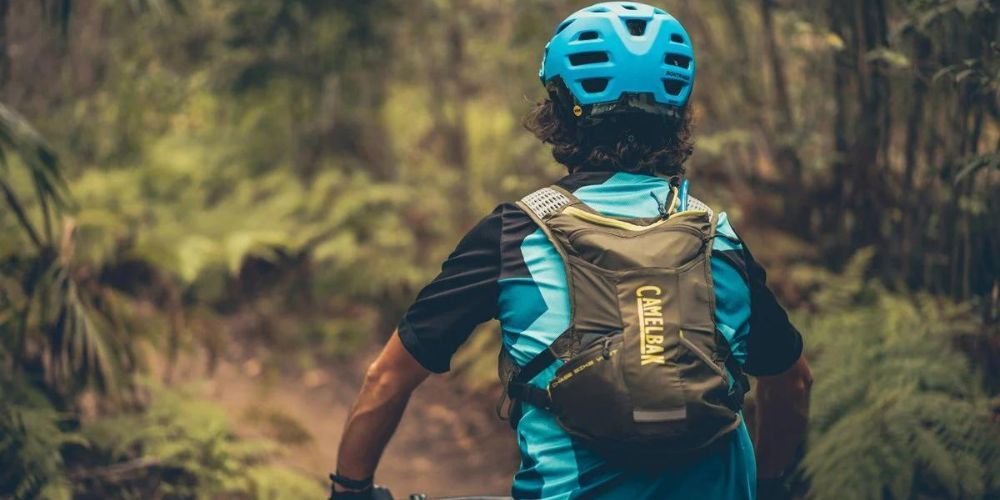
Durability and Material
When you're out there on rugged mountain trails, your hydration pack needs to withstand scrapes from branches, sudden falls, and unpredictable weather. Let's explore the crucial factors that contribute to the durability of your pack and the materials that can make your mountain biking adventures worry-free.
Fabric Strength
The fabric used in your hydration pack plays an integral role in its durability. Look for ripstop nylon or heavy-duty polyester, resistant to tears and abrasions, offering reliable protection from encounters with branches or mishaps while navigating tricky terrains. Ripstop nylon is particularly adept at preventing a small tear from becoming a large one due to its unique weaving pattern that reinforces the fabric.
This way, you can have peace of mind knowing that your pack can handle the occasional snag or scrape without compromising its integrity.
Water Resistance
Weather can change quickly, making water-resistant features essential for keeping both your water and gear dry during sudden downpours or wet conditions on the trail. Look for packs with durable water-resistant coatings or built-in rain covers, serving as protective barriers against moisture.
Imagine riding through a sudden drizzle, only to find your spare clothing or energy bars soaked – not an ideal situation. A reliable water-resistant hydration pack safeguards everything inside, helping you stay comfortable and prepared for any weather conditions nature throws your way.
Zippers and Buckles
Equally important for durability are zippers and buckles. These components need to withstand the strain of constant use and potential sudden pulls while navigating rugged terrain. Pay close attention to the design and quality of zips and buckles. Look for durable zippers that won't snag or break easily under stress.
Just like a sturdy bridge holds firm even during rough weather, quality zips and buckles ensure that your hydration pack holds strong regardless of external forces, allowing you to focus solely on conquering challenging trails. In this regard, YKK zippers are recognized as a hallmark of quality and longevity in hydration packs, providing smooth functionality even when exposed to demanding situations.
By considering these factors, you’re preparing yourself for a seamless biking experience without worrying about gear failures hindering your journey.
Balancing durability with storage is crucial for optimizing your biking experience. Now, let's turn our attention to exploring additional storage options that can enhance your outdoor adventures.
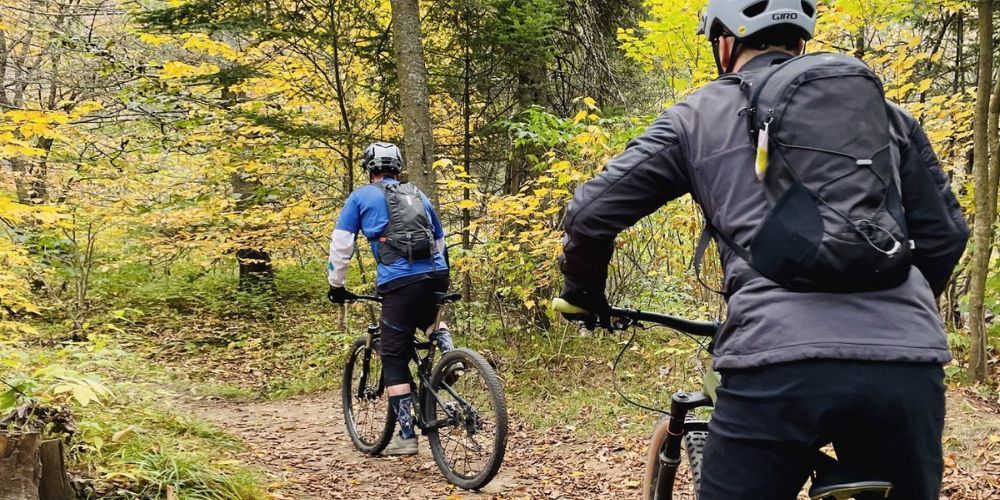
Extra Storage Options
When you're out on the trails, having easy access to your tools, snacks, and other essentials can make all the difference. A reliable hydration pack should offer more than just a water reservoir; it should also provide convenient storage solutions.
Dedicated Tool Organizers
For avid mountain bikers, having quick access to repair gear on rugged terrain is essential. Look for a hydration pack with dedicated tool organizers such as roll-up sleeves or built-in pouches. These features keep your repair equipment secure and easily accessible, eliminating the hassle of rummaging through your bag when you need a specific tool. Whether it's fixing a flat tire or making minor adjustments on the go, these compartments are a game-changer for any mountain biker.
Helmet Carry Systems
Helmets are essential for safety, but lugging them around when not in use can be cumbersome. Choose a hydration pack that includes straps or clips designed specifically to carry your helmet. This frees up your hands and prevents you from having to carry your helmet separately. Plus, having a secure place to store your helmet ensures that it stays protected when it's not on your head.
Additional Pockets for Organization
Staying organized is key when you're on the trails, and having extra pockets in your hydration pack can make a significant difference. Side mesh pockets come in handy for storing items that you need quick access to, such as energy bars or small snacks. Front zipped pockets are great for keeping essential items like maps or trail permits secure and easily retrievable. Internal compartments offer added organization for items like phones or first-aid supplies, ensuring that everything has its designated spot.
Each of these features serves an important purpose in enhancing your riding experience. They provide functionality and convenience, allowing you to ride with ease and focus on enjoying the trail without worrying about gear accessibility.
Now that we've explored the benefits of these additional storage options, it's clear that they contribute significantly to the overall practicality of a mountain biking hydration pack.
Having the right storage options in your hydration pack can truly elevate your biking experience by providing convenience and peace of mind on the trails.
AUTHOR
Nature's Playbook
As an Amazon Associate I earn from qualifying purchases.


